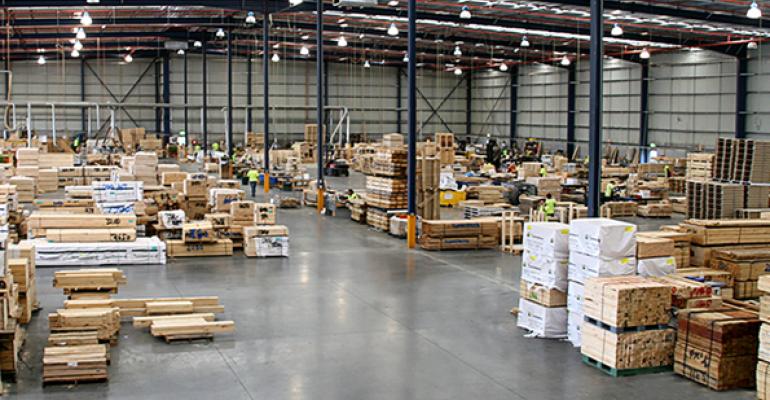Industrial developers in coastal U.S. markets are cashing in on the extraordinarily high demand by small businesses for for-sale modern warehouse facilities of between 25,000 and 40,000 sq. ft.
For example, Los Angeles-based Dedeaux Properties and a joint venture partner recently sold seven stand-alone industrial buildings ranging in size from 27,438 sq. ft. to 43,166 sq. ft. at Echelon Business Park in City of Industry, Calif. before a certificate of occupancy had been secured, according to Matt Evans, Dedeaux chief investment officer.
While investment-grade industrial properties in this region are trading at $120 per sq. ft., according to second quarter Greater Los Angeles Inland Empire Industrial Knowledge Report from real estate services firm Colliers International, the seven San Gabriel Valley buildings, which totaled 246,543 sq. ft., brought in about $50 million, or nearly $203 per sq. ft.
The buildings include two-story office space, ample dock-height loading and configurations for loading shipping containers. Evans says the bidders included a mix of small businesses and entrepreneurs, including: import/export and light assembly companies involved in the automobile, textile, electronic components and apparel industries, as well as suppliers desiring “last mile” space nearby large retail distributors like Amazon.
The high values commanded by buildings under 40,000 sq. ft. underscore the huge demand and low vacancy rates for small industrial buildings, says Dennis Sandoval, executive vice president with DAUM Commercial Real Estate Services, who represented Dedeaux in the sale. The vacancy rate for buildings of that size has hovered at 1.0 percent for the past four quarters, while overall industrial vacancy rate in the area has ranged between 2.3 percent and 2.8 percent in the first quarter of 2018.
Evans also notes that the San Gabriel Valley is an infill market, so it costs more to build industrial facilities due to the higher cost of land. In addition, larger buildings are more cost-efficient to build from the ground-up on a per-sq.-ft. basis due to economy-of-scale discounts for infrastructure, utilities and other construction requirements, he adds.
“Due to Echelon’s success, a couple [of] other local developers revamped their single-building development plans and brought to market similar free-standing, multi-building developments in the North San Gabriel Valley,” says Sandoval.
Southern California-based Mike Kendall, executive managing director of investment services, Western region, with Colliers International, who is responsible for investment sales from Denver westward, says that his counterparts nationally report an upswing in both sales and leasing demand for smaller industrial buildings everywhere small businesses are doing well. But he notes that the greatest demand for small, for-sale assets is in the four-corner coastal markets—Southern California, the Pacific Northwest, New York/New Jersey and Miami, which have similar cap rates, rental growth and entitlement challenges due to the infill phenomenon.
Inland markets like Atlanta, Chicago and Dallas have lower values because land is more readily available and thus less expensive than in coastal markets and labor costs are significantly lower, particularly in “right-to-work” markets in the South and Midwest, Kendall adds.
Not long ago, he notes, “There was an inversion in values, with larger buildings bringing higher pricing per square foot than smaller buildings, but now we’re seeing equilibrium in values, due to strong demand for smaller, for-sale buildings by small businesses, high-net-worth individuals and other private investors.
Kendall cites the following reasons for the extraordinary demand for small industrial buildings in coastal markets:
- Interest rates are still historically low, and owning your own building is the best hedge against inflation for the next 10 years and helps to build value while the company grows.
- Most existing small buildings were built between 20 and 40 years ago and are now obsolete for modern uses.
- Certain cultures have a strong bias for owning their own real estate to house their businesses, including Chinese and Korean business owners, which operate a significant number of import/export operations in coastal markets, particularly on the West Coast.
- Small businesses that want to remain in place as they grow, but may get priced out if they rent, are also opting to buy their own real estate.
- Some small business owners also using their company’s real estate as a retirement fund, purchasing it and leasing it back to their company, which pays the mortgage. Then, when they retire and sell the business, the real estate will continue to generate income for their retirement.
Meanwhile, Evans also says that many small businesses are buying their own real estate simply because they are growing in a specific market where there is little space available and/or are investing significant capital in customizing workspaces to fit their unique operational needs.





